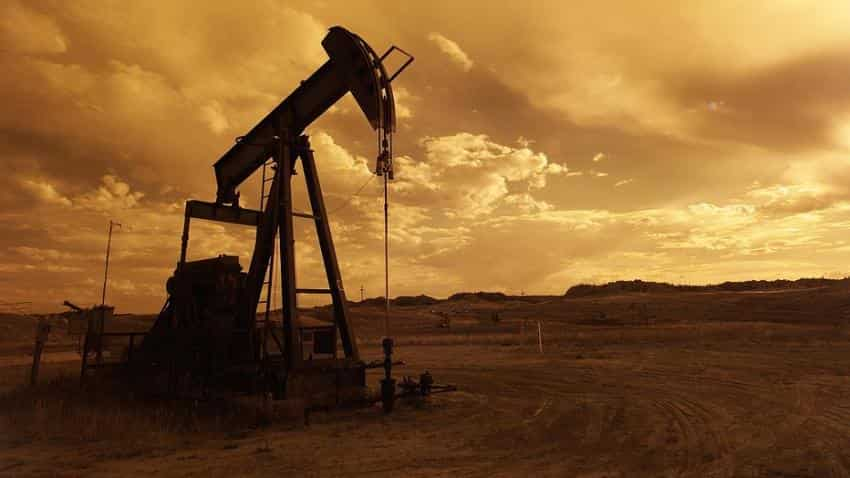Moody's affirms HPCL ratings following its acquisition by ONGC
After ONGC buying the government stake, HPCL will become subsidiary of India's largest oil producer but its board will continue to be in place.

Moody’s Investor Service on Monday affirmed its rating of Hindustan Petroleum Corp Limited (HPCL) to Baa2, following the company’s acquisition by the state-owned Oil & Natural Gas Corp (ONGC).
Vikas Halan, Moody's Vice President and senior Credit Officer, said, "Although we no longer classify HPCL as a government related issuer, but we continue to incorporate our expectation of extraordinary support from the government of India in HPCL's Baa2 issuer ratings, through ONGC, which results in two notches of uplift from its standalone credit strength.”
According to Moody’s, despite the government not being the shareholder of HPCL, it will still continue to provide support to the company, as a regulator, through setting price of controlled petroleum products and managing the subsidy framework, and as provider of liquidity through the state owned banking system in India.
In the month of July 2017, the Union Cabinet gave in-principle nod for the sale of government's stake in HPCL to ONGC.
To purchase 51.11% stake in HPCL, ONGC needs to pay about Rs 36,915 crore to the government, from which about Rs 12,000 crore will be done by cash and remaining by short-term borrowing.
After ONGC buying the government stake, HPCL will become subsidiary of India's largest oil producer but its board will continue to be in place.
The proceeds will help the government to stay within the short distance of fiscal deficit targets for FY17-18 by selling its 51.1% stake in HPCL to ONGC at 14% premium of Rs 473.97 per share, yet keeping its control on HPCL through ONGC, a PSU, the services said.
In Moody’s views, the government’s control over HPCL's business strategy will remain as strong as before.
They will still consider HPCL as a "Central Public Sector Enterprise", which means that all major decisions of HPCL will have to be approved by the government. Not only this, government will also have the control of appointing all the board of directors of HPCL.
The sale of stake also does not reduce HPCL's strategic importance to the government, Moody’s explained.
Currently, HPCL is stated to be the third largest state-owned refining and marketing company in India, accounting for 10.6% of domestic refining capacity, along with marketing and distribution of 18.1% of petroleum products consumed in the country.
Moreover, HPCL along with the oil and gas sector is one of the largest contributors to the government's revenue receipts.
Halan says, "In addition to the expected extraordinary support from the government, we also expect ONGC to provide support to HPCL in times of distress.”
“This is driven by ONGC's strong ability to provide support as reflected in its Baa1 ratings and its willingness to provide support, which is driven by HPCL's position as the largest subsidiary of ONGC,” says Halan.
Halan also cautioned saying “any default by HPCL will cause a default on ONGC under the terms of the latter's bonds given it will be deemed a material subsidiary."
Talking about credit ratings, the agency explained that due to this sale of stake by the government, they will no longer classify HPCL as a government related issuer and as such will not use its Joint Default Analysis framework for assessing HPCL's ratings.
Furthermore, HPCL’s rating will remain constrained by the rating of the government given its linkages with the domestic economy.
At present, HPCL's standalone credit profile indicates three factors as per Moody's.
They are - (1) its strong position as India's third largest stated owned refiner of crude oil and third-largest distributor of petroleum products; (2) the company's exposure to cyclical refining margins, fuel subsidies and high working capital swings that result in volatility in its credit metrics; and (3) low capacity for further deterioration in the company's credit metrics, which have weakened because of high dividend payments and increase capital spending in the last 12 months.
Explaining rating mechanism further for HPCL, Moody's stated that an upgrade in the company's issuer rating will require an upgrade of the ratings of both the Indian government as well as ONGC.
A rating upgrade will also require an improvement in HPCL's standalone credit quality.
Moody's believe that HPCL's credit metrics could improve because of reduction in borrowings through free cash flow generation.
However, warning that HPCL may face downward pressure in the following areas.
- If the government or ONGC's rating is downgraded
- The government makes changes to the subsidy framework that are negative for HPCL
- The company's standalone credit quality deteriorates by more than one notch
- The government's direct or indirect ownership (through ONGC) of HPCL is reduced below 51%, or government control is reduced by some other means, which would require a reassessment of the level of support incorporated into its ratings.
Credit metrics indicative of an improvement in HPCL's standalone credit quality include retained cash flow (RCF)/adjusted debt exceeding 25% on a sustained basis.
08:11 PM IST






 BSVI fuel will be available across India from April 1: MK Surana, CMD, HPCL
BSVI fuel will be available across India from April 1: MK Surana, CMD, HPCL Strategic disinvestment of both HPCL, BPCL this year?
Strategic disinvestment of both HPCL, BPCL this year? HPCL recruitment 2019: Various positions open, salary at least Rs 40,000 per month
HPCL recruitment 2019: Various positions open, salary at least Rs 40,000 per month HPCL recruitment 2019: 164 vacancies, last date Sept 16 - Check salary, how to apply
HPCL recruitment 2019: 164 vacancies, last date Sept 16 - Check salary, how to apply Sensex tests 38K resistance, Bank Nifty soars over 150 points; Yes Bank, HPCL stocks gain
Sensex tests 38K resistance, Bank Nifty soars over 150 points; Yes Bank, HPCL stocks gain